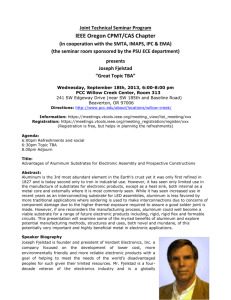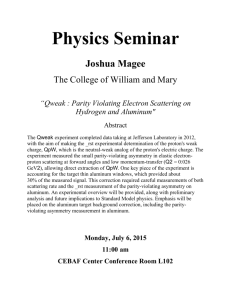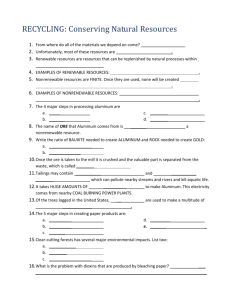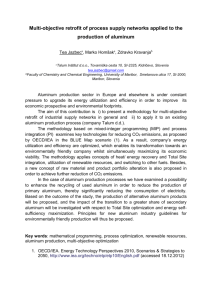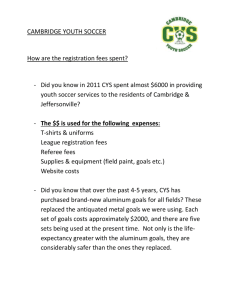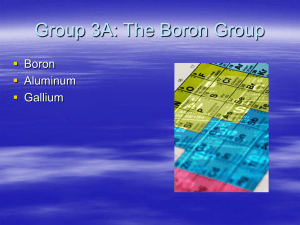Core Assessment Practice
advertisement
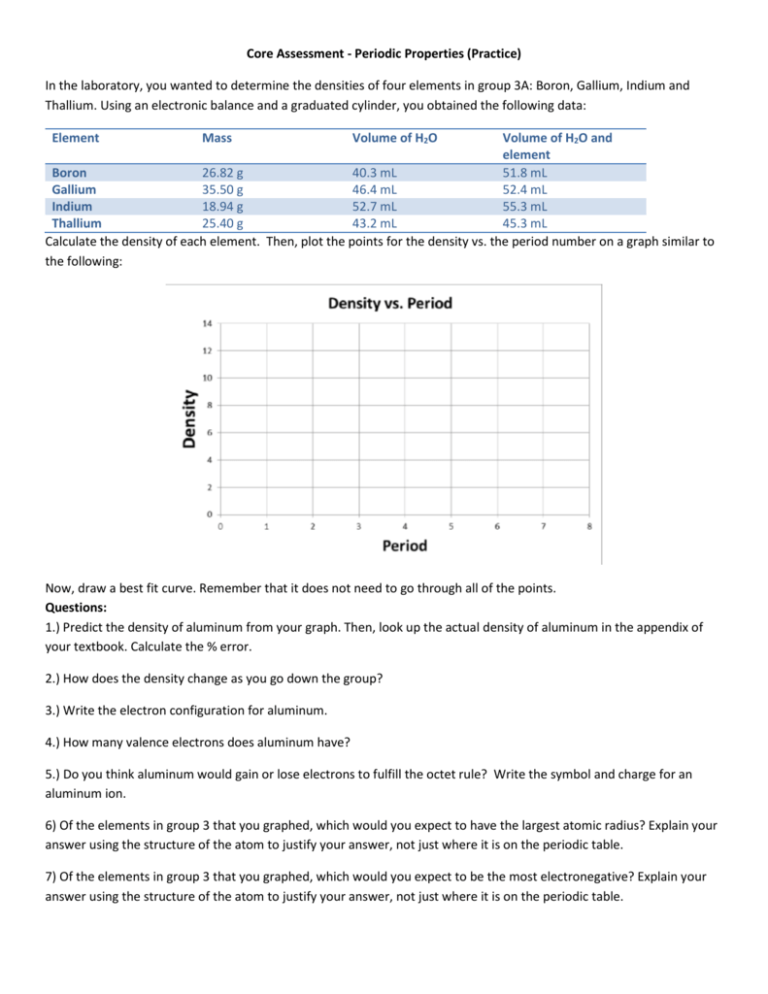
Core Assessment - Periodic Properties (Practice) In the laboratory, you wanted to determine the densities of four elements in group 3A: Boron, Gallium, Indium and Thallium. Using an electronic balance and a graduated cylinder, you obtained the following data: Element Mass Volume of H2O Volume of H2O and element Boron 26.82 g 40.3 mL 51.8 mL Gallium 35.50 g 46.4 mL 52.4 mL Indium 18.94 g 52.7 mL 55.3 mL Thallium 25.40 g 43.2 mL 45.3 mL Calculate the density of each element. Then, plot the points for the density vs. the period number on a graph similar to the following: Now, draw a best fit curve. Remember that it does not need to go through all of the points. Questions: 1.) Predict the density of aluminum from your graph. Then, look up the actual density of aluminum in the appendix of your textbook. Calculate the % error. 2.) How does the density change as you go down the group? 3.) Write the electron configuration for aluminum. 4.) How many valence electrons does aluminum have? 5.) Do you think aluminum would gain or lose electrons to fulfill the octet rule? Write the symbol and charge for an aluminum ion. 6) Of the elements in group 3 that you graphed, which would you expect to have the largest atomic radius? Explain your answer using the structure of the atom to justify your answer, not just where it is on the periodic table. 7) Of the elements in group 3 that you graphed, which would you expect to be the most electronegative? Explain your answer using the structure of the atom to justify your answer, not just where it is on the periodic table. Core Assessment - Periodic Properties (Practice) In the laboratory, you wanted to determine the densities of four elements in group 3A: Boron, Gallium, Indium and Thallium. Using an electronic balance and a graduated cylinder, you obtained the following data: Element Mass Volume of H2O Boron Gallium Indium Thallium 26.82 g 35.50 g 18.94 g 25.40 g 40.3 mL 46.4 mL 52.7 mL 43.2 mL Volume of H2O and element 51.8 mL 52.4 mL 55.3 mL 45.3 mL Calculate the density of each element. Then, plot the points for the density vs. the period number on a graph similar to the following: Now, draw a best fit curve. Remember that it does not need to go through all of the points. Questions: 1.) Predict the density of aluminum from your graph. Then, look up the actual density of aluminum in the appendix of your textbook. Calculate the % error. 2.) How does the density change as you go down the group? 3.) Write the electron configuration for aluminum. 4.) How many valence electrons does aluminum have? 5.) Do you think aluminum would gain or lose electrons to fulfill the octet rule? Write the symbol and charge for an aluminum ion. 6) Of the elements in group 3 that you graphed, which would you expect to have the largest atomic radius? Explain your answer using the structure of the atom to justify your answer, not just where it is on the periodic table. 7) Of the elements in group 3 that you graphed, which would you expect to be the most electronegative? Explain your answer using the structure of the atom to justify your answer, not just where it is on the periodic table.


